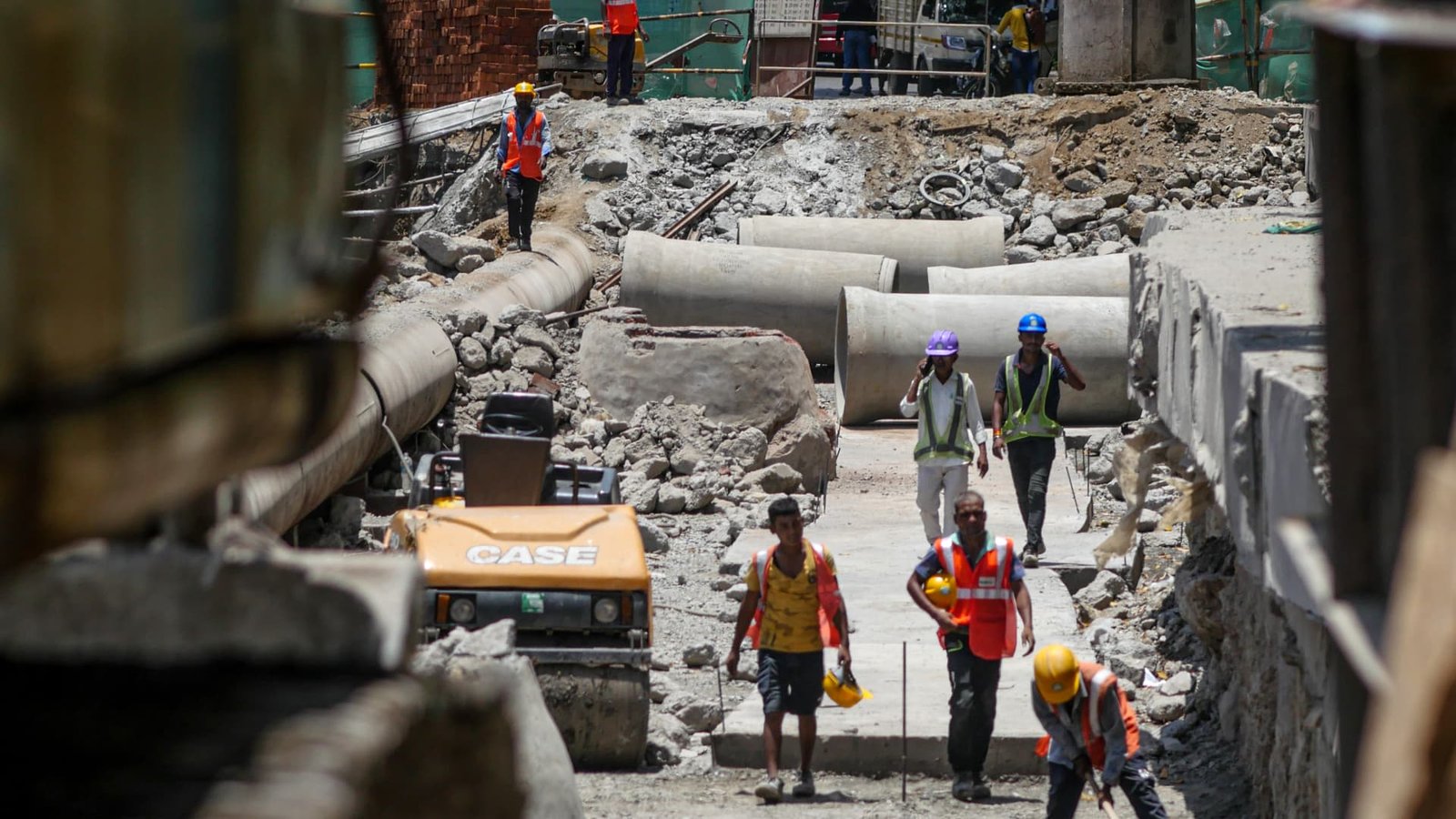Physical Address
304 North Cardinal St.
Dorchester Center, MA 02124
Physical Address
304 North Cardinal St.
Dorchester Center, MA 02124

Construction workers in Mumbai, India on June 5, 2024.
Bloomberg | Bloomberg | Getty Images
India’s economy grew just 5.4% in the second fiscal quarter ended in September, well below economists’ estimates and close to a two-year low.
Printing follows a 6.7% quarter-on-quarter increase, the lowest since the last quarter of 2022. Economists polled by Reuters had forecast 6.5% growth for the period, while the Reserve Bank of India expected a 7% rise.
The national statistical agency noted slow growth in the manufacturing and mining sectors.
The yield on the country’s 10-year Treasury bond fell quickly to 6.74% from about 6.8% after the release.
A weak GDP reading could potentially affect the trajectory of national interest rates as the RBI’s Monetary Policy Committee meeting is scheduled for December 6-8. Market watchers had been expecting an eleventh consecutive RBI pause, with the repo rate currently at 6.5%.
Harry Chambers, assistant economist at Capital Economics, said Friday’s reading showed weakness was “broad”. His firm expects economic activity to “struggle in the coming quarters.”
“This is encouraging policy easing, but the recent rise in inflation means the RBI will not feel comfortable cutting interest rates for a few more months,” he said in a research note.

Speaking to CNBC “Squawk Box AsiaAhead of the GDP release, Alicia Garcia Herrero, chief Asia-Pacific economist at Natixis, predicted that India’s economy would slow but not “collapse” in 2025.
Natixis India has a growth forecast of 6.4% for 2025, she said, without specifying whether this is fiscal or calendar year, but added that printing could reach as high as 6%, which she qualified as “not a problem at all, but it not welcome.”
Separately, the RBI projected GDP growth in the 2024 fiscal year ending March 2025 to reach higher than 7.2%.
Asked how India’s economy would fare under President-elect Donald Trump’s second presidency, Herrero said the country was “not really at the center of China’s realignment of the value chain.”
“If I were the Trump administration, I would start (looking at tariffs) on Vietnam. That’s a much more obvious case,” she noted.
She said China could manufacture products in India for Indian consumption instead of exporting products globally and thus New Delhi could avoid the impact of tariffs.